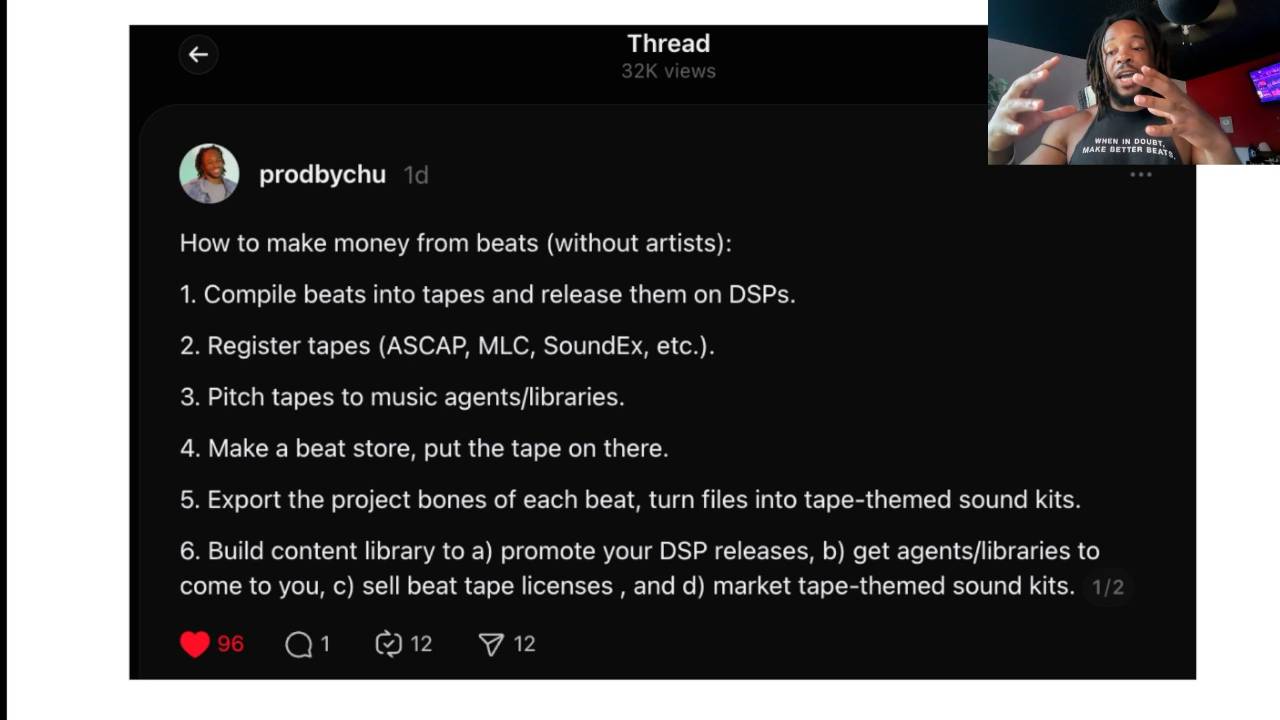
Keywords: Dynamics, compression, automation controls, gain controls, release, attack, threshold, ratio, make up gain.
This letter is based on week 1 of the 8-week Dynamics Module happening in DOPE right now - click here to join for the full lesson/module, guided tutorials, mentorship, and resources that will help you make music that earns you money.
Why should you even bother with compression?
I used to mystify compression.
Which is fair tbh.
Because whenever I asked someone about it, they always had a different way of explaining it:
“Oh, it’s the dynamic manipulation of an audio signal in order to increase perceived loudness.”
“It’s just logarithmic equalization, bro - simple!”
“Think of it as programmed volume automation homie.”
“The main function is simply transient shaping.”
None of these answers is wrong, but none explain what compression does.
So, what even is compression?
Compression is taking a sound (a sample, a track, a drum loop or melody, a full song), reducing the volume of its loudest parts, increasing the volume of its quietest parts, all for the purpose of having less “dynamic range” which increases it’s perceived clarity and loudness.
Example time.
Here’s an uncompressed signal, a drum loop:

There are hard hitting kicks that create a lot of volume, along with hats and cymbals that produce less gain.
Helpful note: gain is just another word for volume, the amount of power produced by an audio signal - traditionally measured in decibels (dB), though new and more accurate/useful measurements such as LU (think LUFS, Loudness Units Full Scale) are emerging.
We just released a lesson about this in DOPE!
Click here to check it out here if you're a member 🧠.
The above signal can be viewed as having wide dynamic range.
For comparison, here’s a compressed signal using the same drum loop:

The volume of the kick has been turned down by setting the ratio and threshold. Then this volume control is being automated by the release and attack settings. Thus, this effected signal can be viewed as having less dynamic range and, depending on the use case, can lead to higher perceived loudness and clarity of the drum loop overall.
Compression is also a powerful sound design tool, but that’s outside the scope of today’s discussion (although there will be a lesson on this in DOPE next week!).
Knowing what compression does is the first step in the right direction.
Because there’s a lot of down side to not having at least a basic understanding of compression.
Mainly, two huge costs are:
- Your engineering stat it low (because you don’t know how to do one of the most fundamental things in mixing).
- Your decision making power concerning instrument and VST purchases is low (due to ignorance).
Since you can’t use compression, you won’t be able to do any meaningful mixing for artists. Even though you don’t have to fully take on the role of engineer, the abilities to 1) produce well mixed demos, and/or 2) come in the clutch to mix something for an artist [and for a fee 🧠] are just a few invaluable benefits of understanding this foundational mixing concept.
And since you don’t understand the very basic functionings of a compressor, VST companies can re-package Fruity Limiter and sell it to you over and over again (yes, this does happen and next weeks letter will expose this by going in-depth with an insider!).
But Compression is not that hard to understand and use.
There’s a lot that can go on in a compressor.
Some have just a few knobs while others look like the console of a rocket ship.

But, as stated above, compressors only have one main purpose: turn down the highs and turn up the lows of an audio signal.
That’s it, simple.

And every single compressor on earth, whether digital or analog, does this the exact same way.
No matter what else is going on with the compressor, it will always have 5 fundamental levers/knobs that you can tweak to control the dynamics of your input signal:
- Release
- Attack
- Threshold
- Ratio
- Make up gain
These 5 dynamic controls make up what I call…
The Fundamental Anatomy Of A Compressor.
Once you understand what these terms mean, compression as a concept will no longer confuse you.
(But if you have questions after this, please hop in discord and ask!)
We can understand all 5 of the fundamental compressor anatomies as having 1 of 2 functions;
- Automation control, or
- Gain control.
The gain controls set how much reduction in volume occurs and how much volume has to occur before reduction is triggered. They also control how much volume is added to the quiet signals.
Automation controls set time intervals that determine how long it takes for the compressor to go from no compression (off) to the full amount of compression determined by the gain controls (on).
It’s helpful to note that automation controls slope the amounts of gain reduction (compression) on and off gradually as to give the compression a natural feeling that lends to the goal of increased perceived loudness and clarity.
These 2 controls aren’t necessarily mutually exclusive, as they effect each other in real time. But you’ll see in a moment why this type of distinction is helpful.
Let’s start with…
Release.
Release is an automation control that determines how quick the signal returns to its original volume after compression.

It’s an automation tool built into the compressor that tells the compressor how quickly to “let go” of the compression.
Measured in milliseconds (ms).
Attack.
Another automation control.
This one controls how fast the compression turns on.

Measured in milliseconds (ms).
Threshold.
A gain control.
This sets the amount of volume that needs to be reached before the compressor is activated.

Measure in decibles (dB).
Ratio.
A gain control.
Controls the amount of gain reduction that happens once the threshold is hit.

Measure in a ratio of decibels (dB:dB).
Understanding the math behind this is helpful, but not required. Consider joining DOPE for the full 8-week Compression & Transient Shaping Module if you want to truly understand the depth of this concept!
Make up gain.
A “special” kind of gain control.
BUT…
It’s still just a volume knob fr, so in finality it’s just gain control.
A compressor just turns the loud sounds of the signal down using the gain and automation controls. Then we use make up gain to turn up the overall signal.
When done correctly, this leads to more clarity and loudness in your sound!

Measure in decibles (dB).
Compression can add magic to your bag of tricks as a producer.
Practice over time will allow you to make masterful use of this amazing skill. If you want to learn more about it directly from me along with growth-minded producers, click this link to learn more about joining my label DOPE and getting access to our full 8-week Compression & Transient Shaping Module!
Blessings,
Chu
Get Sound Kits 👇






